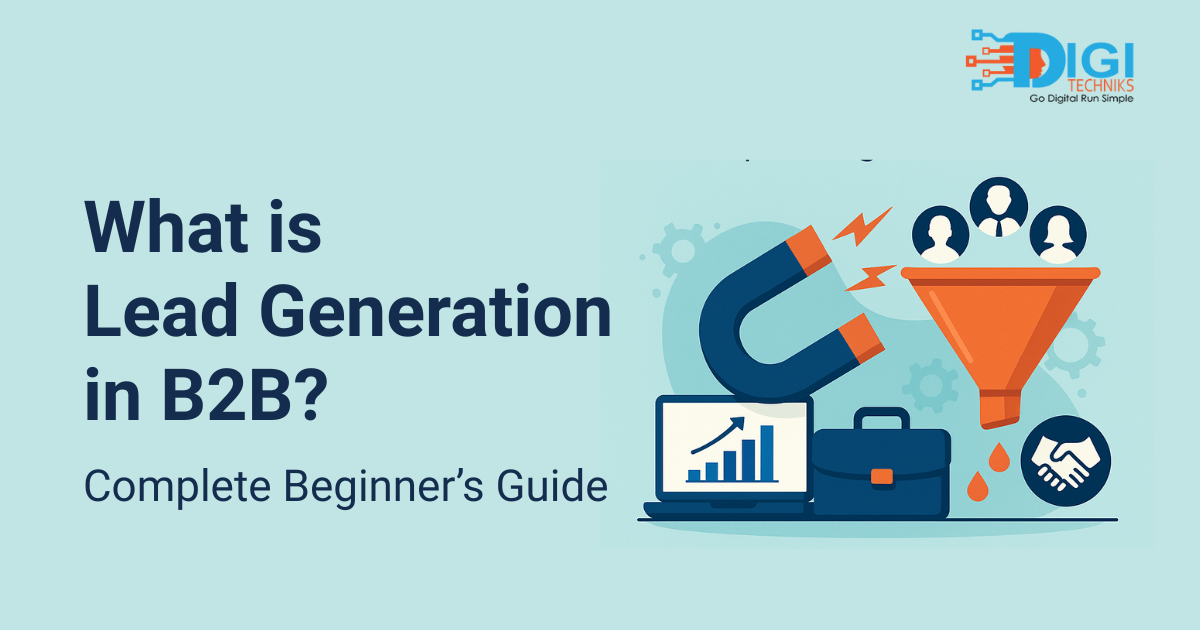
Do you want to crack the code on how you can use SEO in 2025 to consistently grow your business with high-quality B2B leads and sales?
You may have heard success stories of companies ranking on Google and turning those clicks into real revenue. Now you want the same for your business. That’s great—but here’s the reality: SEO is no longer a “nice-to-have.” It’s the foundation of sustainable growth in today’s hyper-competitive digital landscape.
But where should you begin? Which SEO strategies will actually work for your business in 2025?
Before jumping into tactics, you need clarity on your goals, target audience, and the right approach. Without a strategy, SEO can quickly become a time-consuming money drain that delivers little to no results. Worse, poor execution can harm your site’s authority and prevent you from ranking for the right buyer-intent keywords.
That’s why a solid SEO strategy is essential. It keeps you focused, saves time and money, and ensures you’re targeting the right decision-makers with the right content.
Equally important is knowing what not to do. Outdated tricks like keyword stuffing, low-quality backlinks, or AI-generated spam content can damage your brand and trigger penalties from Google. In 2025, with AI Overviews and smarter algorithms, Google rewards businesses that create helpful, trustworthy, and intent-driven content.
So, if you’re serious about making SEO work for your business in 2025, this guide has you covered. We’ll show you proven, ethical strategies that generate visibility, attract your ideal clients, and convert traffic into real opportunities.
But first, let’s get clear on what SEO really means for B2B businesses today.
What is SEO?
SEO, or Search Engine Optimization, is the process of driving high-quality traffic to your website while boosting your brand’s visibility, reach, and lead generation through organic (non-paid) search results.
In 2025, SEO goes beyond just ranking on traditional search engine result pages (SERPs). With the rise of Google’s AI Overviews and other AI-driven search features, businesses now need to ensure their content is optimized to appear inside these AI-generated summaries.
Simply put, SEO today is about making your web pages clear, credible, and context-rich so that both traditional search engines and AI systems can easily understand and prefer your content over competitors.
This has given rise to AEO (Answer Engine Optimization)—the practice of structuring your content with FAQs, schema markup, and concise answers that search engines (and AI assistants) can directly use in responses.
By aligning with both SEO and AEO best practices, your website stands a stronger chance of not only ranking in the top results but also being featured in AI Overviews—giving your brand maximum visibility and a higher chance of being discovered by your target audience.
Proven SEO Strategies for 2025 to Drive B2B Leads
SEO is no longer about stuffing keywords or chasing rankings. In 2025, SEO is about building trust, answering questions, and aligning with how decision-makers search.

At Digitechniks, we’ve worked with B2B companies, SaaS brands, and consulting firms to implement SEO strategies that deliver predictable leads—without over-relying on ads. In this article, you’ll discover the SEO tactics that actually work in 2025, complete with examples and links to our latest guides on LinkedIn outreach, cold email, and omni-channel B2B lead generation.
1. Intent-Based Keyword Research (Not Just Volume)
Most businesses still chase keywords with high search volumes. But in 2025, intent beats volume.
Example:
-
Keyword “SEO tips” = high volume, but low intent (anyone could search this).
-
Keyword “SEO strategy for B2B SaaS companies” = low volume, but high intent (decision-makers searching for solutions).
By focusing on buyer-intent keywords, you attract traffic that’s ready to convert into leads.
Related guide: Zero Budget B2B Lead Generation: Proven Strategies for 2025
2. Build Authority with Content Clusters
Google now favors topic clusters and knowledge hubs. Instead of publishing scattered blogs, organize content around pillar pages supported by interlinked blogs.
Example:
-
Pillar blog: SEO for B2B Lead Generation
-
Cluster blogs: LinkedIn outreach, cold email outreach, T-Model pitching, and zero-budget strategies.
This interlinking signals to Google that your website is an authority hub on B2B lead generation.
3. Optimize for AI Overviews & Rich Snippets
With Google AI Overviews rolling out in 2025, SEO now overlaps with AEO (Answer Engine Optimization). You need content that AI can directly pull into summaries.
What to do:
-
Add FAQs & schema markup.
-
Provide short, clear answers under subheadings.
-
Use lists, steps, and statistics for easy extraction.
Example:
Instead of writing:
“SEO helps improve rankings if done correctly.”
Write:
“SEO improves rankings by focusing on intent-based keywords, content clusters, and AEO. These strategies attract decision-makers searching for solutions.”
4. Technical SEO for Lead Tracking
SEO in 2025 isn’t just about Google rankings—it’s also about tracking business impact.
Checklist:
-
Ensure your site passes Core Web Vitals (fast loading, mobile-first).
-
Integrate Google Tag Manager (GTM) to track conversions like form fills, lead magnet downloads, and demo bookings.
-
Use service schema so Google clearly understands your offerings.
Example:
If someone fills a form after reading your SEO blog, GTM can track it and show how much organic traffic = leads.
5. SEO + Omni-Channel Integration
SEO alone won’t deliver maximum ROI in 2025. The best B2B lead generation systems combine SEO with LinkedIn outreach, cold email, and retargeting ads.
Example:
-
A prospect reads your SEO blog (organic traffic).
-
You retarget them with LinkedIn ads (social proof).
-
Then, you send a cold email follow-up (direct engagement).
This multi-touch system multiplies conversions.
Discover: T-Model Pitch for B2B Lead Generation
🚀 Want to turn your website into a B2B lead generation machine?
Book a Free Consultation with Digitechniks and get a custom blueprint for your business.
👉 Talk to Our B2B Consultant Today
Why Many Businesses Still Fail at SEO in 2025
Even with the best tools, many companies fail because they:
-
Chase vanity metrics instead of conversions.
-
Don’t track ROI from organic leads.
-
Depend only on blogs, ignoring LinkedIn & email follow-ups.
Read more: Not Getting Qualified B2B Sales Leads? Here’s Why
Conclusion
In 2025, SEO is no longer about chasing keywords or quick wins—it’s about building a system that consistently attracts, nurtures, and converts the right audience. By focusing on intent-driven keywords, creating content clusters, optimizing for AI Overviews, and tracking performance with the right tools, businesses can turn their websites into predictable lead generation machines.
The most successful B2B companies don’t treat SEO as an isolated activity. They combine it with LinkedIn outreach, cold email sequences, and retargeting campaigns to maximize every opportunity. This omni-channel approach ensures that your brand stays visible at multiple touchpoints, building trust with decision-makers until they are ready to buy.
If you’re ready to stop guessing and start generating qualified leads through SEO, we can help. At Digitechniks, we’ve worked with B2B companies, SaaS firms, and consulting businesses to implement proven strategies that deliver measurable results.
🚀 Book a Free Consultation today and get your customized SEO blueprint for 2025.
👉 Talk to Our B2B Consultant
FAQs
1. What are the best SEO strategies for B2B lead generation in 2025?
The most effective SEO strategies include intent-based keyword targeting, content clusters, Answer Engine Optimization (AEO) for AI Overviews, technical SEO tracking, and integrating SEO with LinkedIn and cold email outreach.
2. How does SEO help generate qualified B2B leads?
SEO attracts decision-makers actively searching for solutions. By ranking for buyer-intent keywords and offering helpful content, businesses generate inbound leads with higher conversion rates compared to generic traffic.
3. What is AEO in SEO and why is it important in 2025?
AEO (Answer Engine Optimization) focuses on structuring content so that AI-driven search features like Google’s AI Overviews can extract and display your answers. It increases visibility, trust, and traffic from conversational queries.
4. How long does it take to see SEO results for B2B companies?
On average, it takes 3–6 months to start seeing measurable results from SEO. The timeline depends on competition, content quality, backlinks, and how well SEO integrates with other lead generation channels.
5. Should SEO be used alone or with other B2B lead generation channels?
SEO works best when combined with LinkedIn outreach, email campaigns, and retargeting ads. This omni-channel model ensures visibility across multiple touchpoints and creates a predictable lead pipeline.



